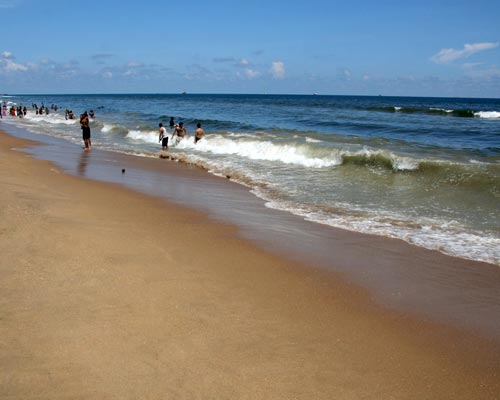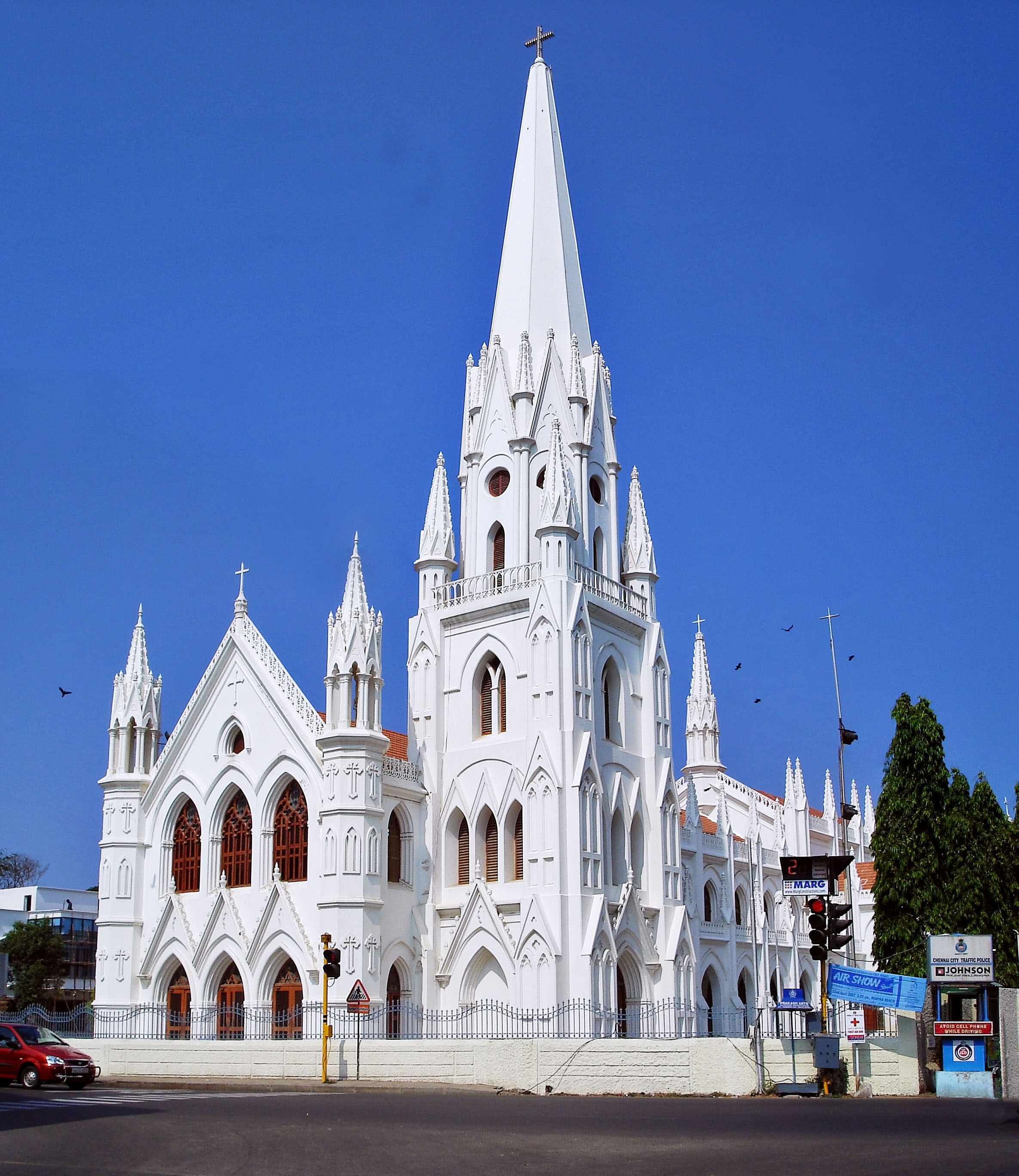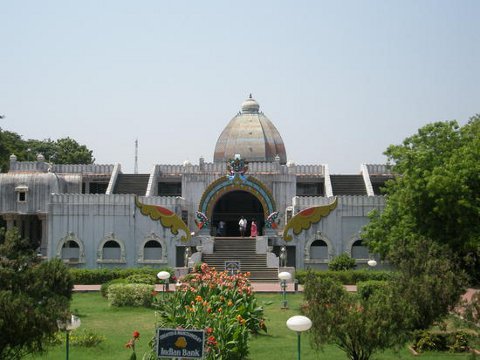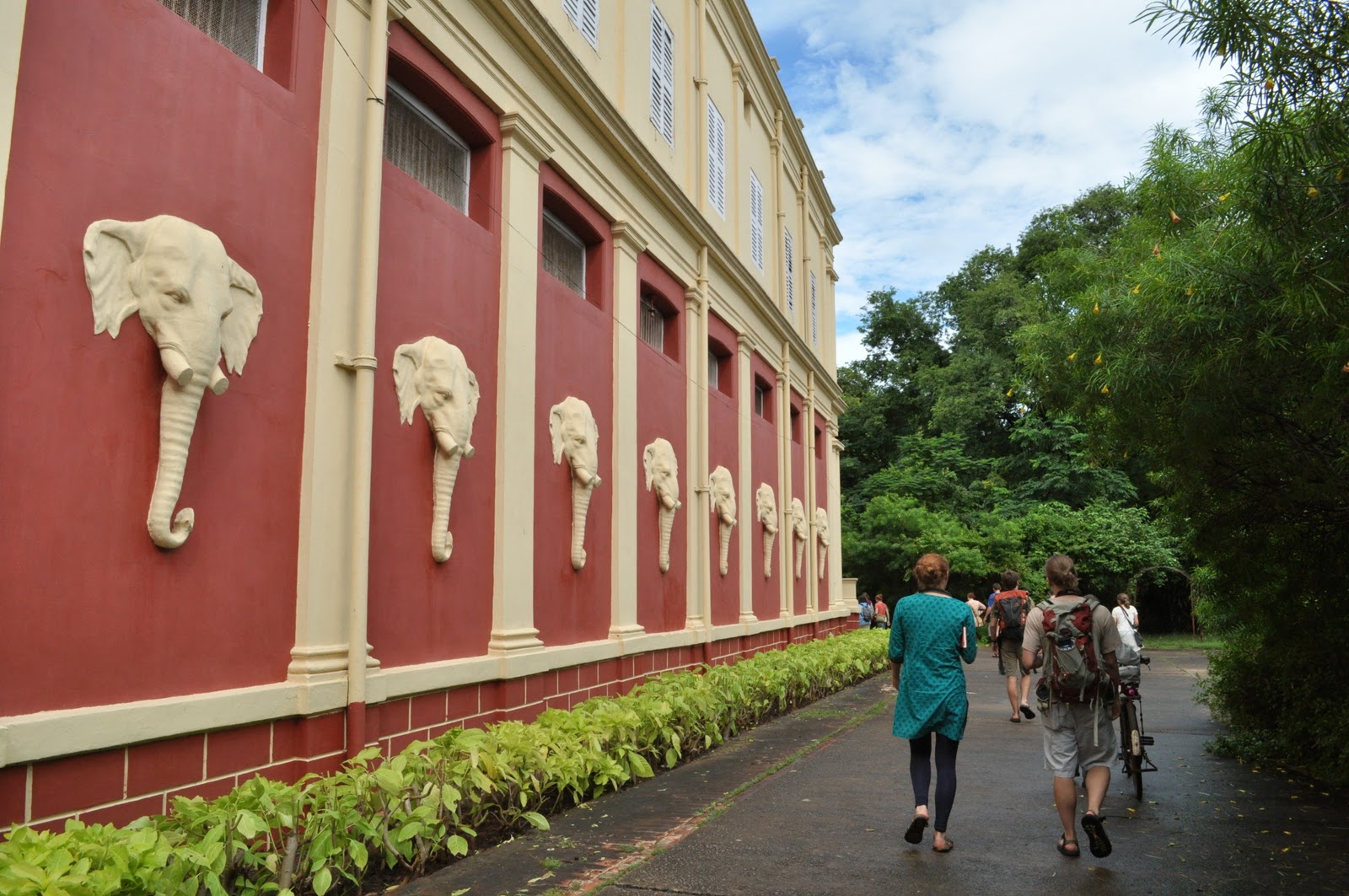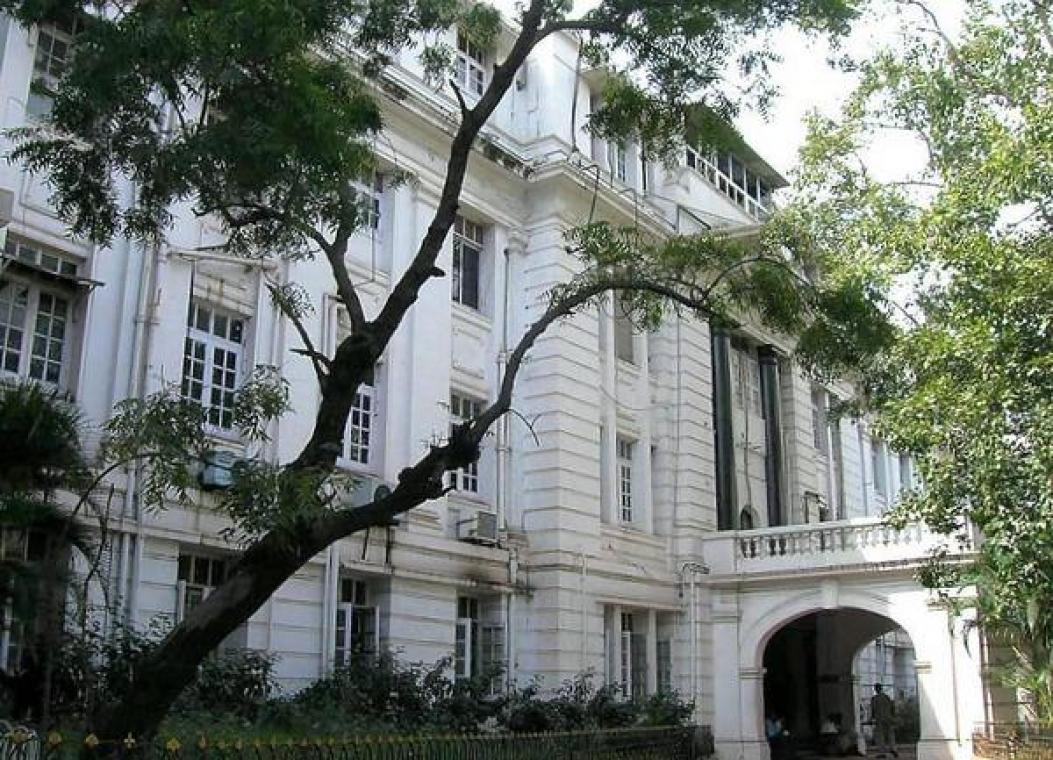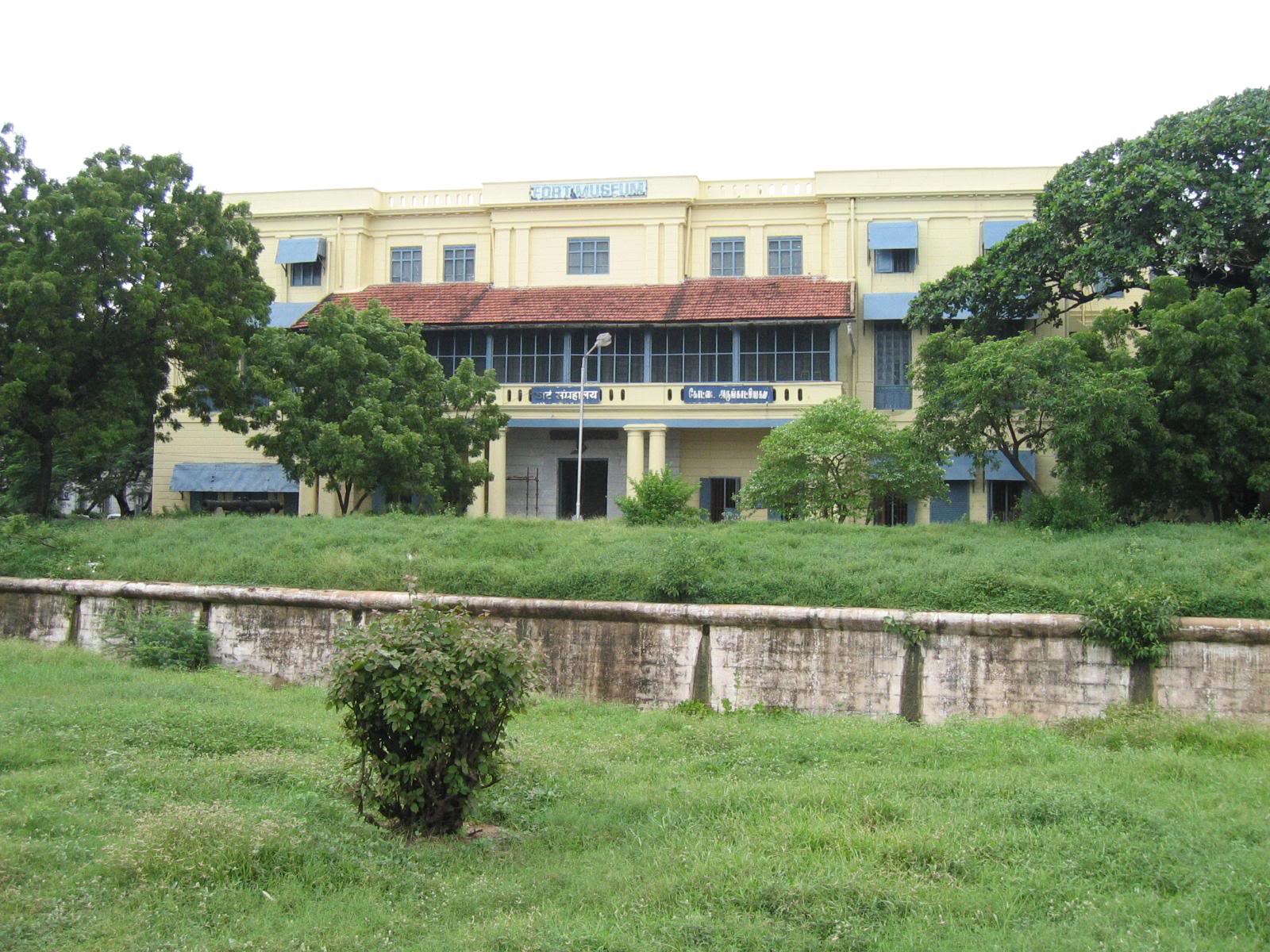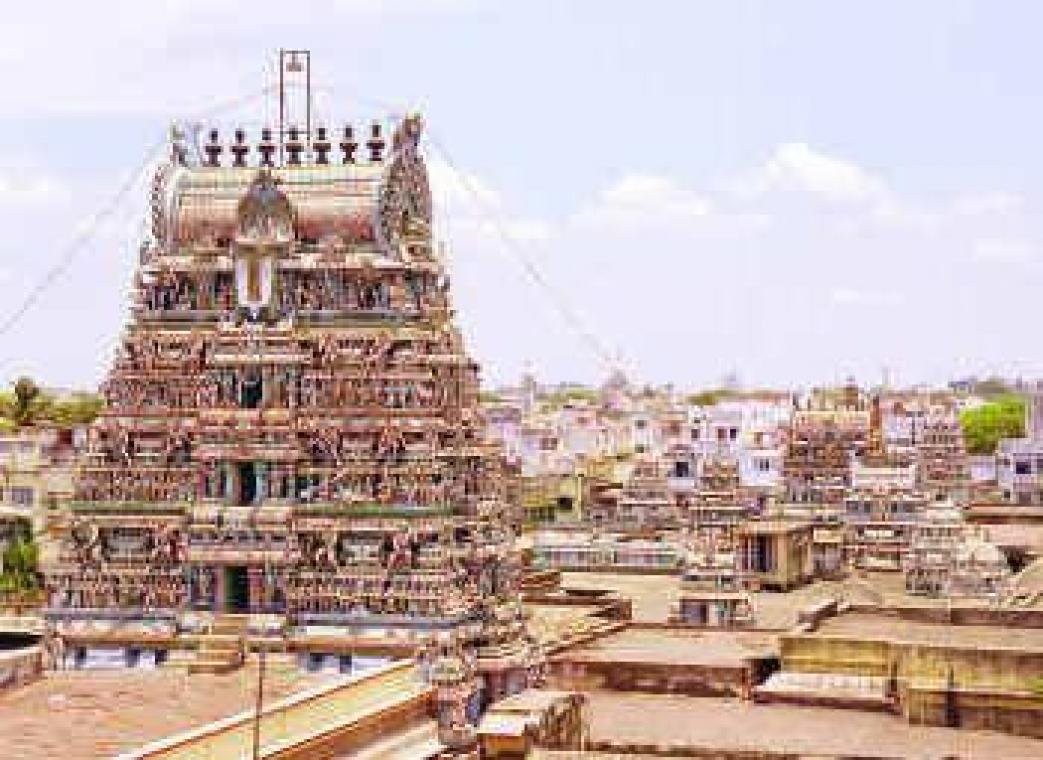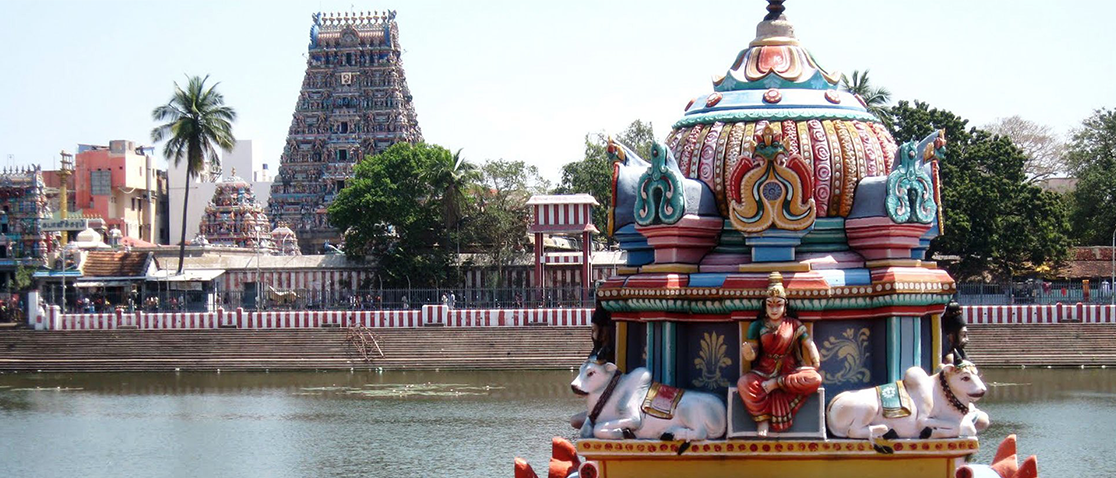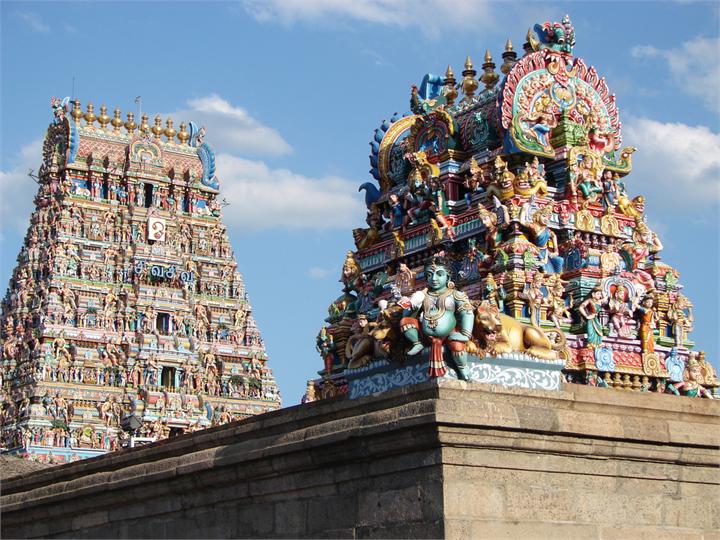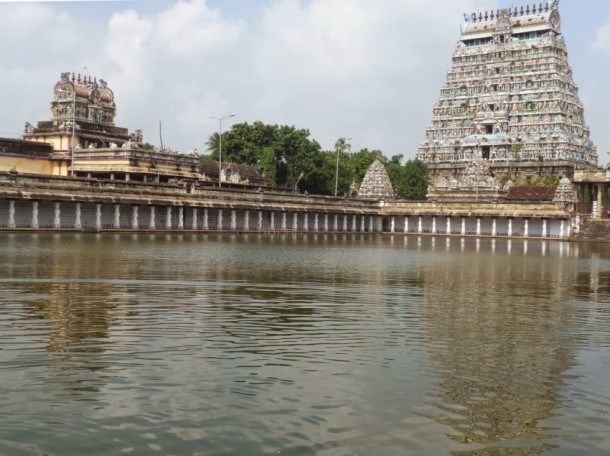Chennai, Queen of the Coromandel
General Information
Other Name:MadrasDistrict:ChennaiState:Tamil NaduCountry:IndiaArea:174 Sq. Km.Language Spoken:Tamil, Hindi and EnglishLong Distance Code:+91-44Importance:Gateway to the South and capital city of Tamil naduBest Time To Visit:November to FebruaryDescription:
Chennai (formerly known as Madras) is the gateway to Southern India and the largest city in southern India located on the Coromandel Coast of the Bay of Bengal, developed after 1639 when the British East India Company established a fort and trading post at the small fishing village of Chennai. It is the capital city of Tamilnadu state. This coastal center of trade has drawn traffic from all over the world for centuries and maintains a cosmopolitan quality as well as a Tamil air. The center of South India's film industry, its skyline is ablaze with bright movie billboards advertising the latest celluloid fantasies.Location:
Chennai has the Bay of Bengal bordering its east, while the state of Andhra Pradesh is on its northwest. It has the Kanchipuram on its south and the states of Kerala and Karnataka on its western side.Climate:
The climate of Chennai is particularly humid and hot mostly through out the year. It is only during few months of winter that the climate remains pleasant. Neverthless, the climate does not refrain the tourists from visiting the marvellous temple architecture of the area.
 San Thome at the southern end of Marina derives its name from St Thomas, the apostle of Christ who is believed to have come to Madras sometime during 52 AD. He was killed on St Thomas Mount just outside the city in 78 AD and was interned in San Thome beach where a church was later built. Several years later, another church was built further inland and his mortal remains were transferred from the old church to the new one. In 1606 the church was rebuilt as a cathedral and in 1896 it was made a basilica. The beautiful stained glass window at the basilica portrays the story of St Thomas and the central hall has 14 wooden plaques depicting scenes from the last days of Christ. In the cathedral is a 3ft. high statue of Virgin Mary, which is believed that have been brought from Portugal in 1543.
San Thome at the southern end of Marina derives its name from St Thomas, the apostle of Christ who is believed to have come to Madras sometime during 52 AD. He was killed on St Thomas Mount just outside the city in 78 AD and was interned in San Thome beach where a church was later built. Several years later, another church was built further inland and his mortal remains were transferred from the old church to the new one. In 1606 the church was rebuilt as a cathedral and in 1896 it was made a basilica. The beautiful stained glass window at the basilica portrays the story of St Thomas and the central hall has 14 wooden plaques depicting scenes from the last days of Christ. In the cathedral is a 3ft. high statue of Virgin Mary, which is believed that have been brought from Portugal in 1543.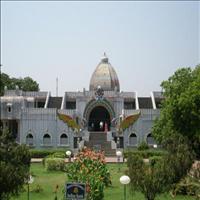
The memorial to the poet-saint Tiruvalluvar is shaped like a temple chariot and is, in fact, the replica of the temple chariot in Thiruvarur. A life-size statue of the saint has been installed in the chariots, which are 33m tall. The 133 chapters of his famous work Thirukkural have been depicted in bas-relief in the front hall corridors of the chariot. The auditorium at Valluvar Kottam is said to be the largest in Asia and can accommodate about 4000 people. It stands as a modern memorial to the great poet who represents the glorious culture of the Tamils.
 The Government museum of Chennai is a grand repository of ancient historical treasures. It is the first government-sponsored museum in the country opened in Chennai in 1851.The building originally belonged to a group of eminent British citizens, known as the "Pantheon committee", in charge of improving the social life of the British in Madras. It houses some of the most treasured objects of the ancient Dravidian culture. this vast complex also houses the The National Art gallery along with the
The Government museum of Chennai is a grand repository of ancient historical treasures. It is the first government-sponsored museum in the country opened in Chennai in 1851.The building originally belonged to a group of eminent British citizens, known as the "Pantheon committee", in charge of improving the social life of the British in Madras. It houses some of the most treasured objects of the ancient Dravidian culture. this vast complex also houses the The National Art gallery along with the Gallery of Contemporary Arts and Children's Museum.
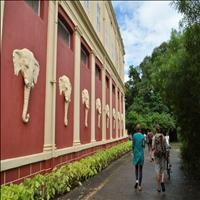 The world headquarters of the Theosophical Society, formed to facilitate and encourage the study of comparative religion, philosophy and science is situated in beautiful sylvan settings in Adyar. The society was founded by Madame Blavatsky and Col. Olott in USA, and later moved to Adyar in 1882. Apart from shrines of all faiths and the peaceful Garden of Remembrance, there is a 95-year old library which has a very good collection of rare Oriental manuscripts written on palm leaves and parchment.
The world headquarters of the Theosophical Society, formed to facilitate and encourage the study of comparative religion, philosophy and science is situated in beautiful sylvan settings in Adyar. The society was founded by Madame Blavatsky and Col. Olott in USA, and later moved to Adyar in 1882. Apart from shrines of all faiths and the peaceful Garden of Remembrance, there is a 95-year old library which has a very good collection of rare Oriental manuscripts written on palm leaves and parchment. Marina beach is located on the eastern side of Chennai, adjoining the Bay of Bengal. Watching the sun set and rise from the beach is an enthralling experience. Though bathing and swimming can be dangerous, as the undercurrent is very strong, even then people come for swimming here. In the evenings, the beach is virtually a fair ground with various kinds of entertainment and food stalls lining the beach.
Marina beach is located on the eastern side of Chennai, adjoining the Bay of Bengal. Watching the sun set and rise from the beach is an enthralling experience. Though bathing and swimming can be dangerous, as the undercurrent is very strong, even then people come for swimming here. In the evenings, the beach is virtually a fair ground with various kinds of entertainment and food stalls lining the beach.Golden sand, good surf and a shimmering clean blue sea, this in a nutshell, is Marina beach. This beach is counted among one of the longest beaches in Asia. Its 12-km long stretch was made beautiful by the wonderful facelift given by Governor Mount Stuart Elephantine Grant Duff in the early 1880's, and is a major tourist attraction today.
 Fort St. George occupies a place of pride and prominence in Chennai. The British East India Company under the direct supervision of Francis Day and Andrew Cogon built it in 1640 AD. This bastion achieved name from St. George, the patron saint of England. The fort houses St. Mary's Church and fort museum.
Fort St. George occupies a place of pride and prominence in Chennai. The British East India Company under the direct supervision of Francis Day and Andrew Cogon built it in 1640 AD. This bastion achieved name from St. George, the patron saint of England. The fort houses St. Mary's Church and fort museum.St. Mary's Church the oldest Anglican Church in India built in 1680 and the tombstones in its courtyard are the oldest British tombstones in India. This ancient prayer house solemnised the marriages of Robert Clive and Governor Elinu-Yale, who later founded the Yale University in the States.
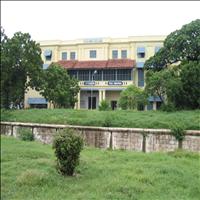 The Fort Museum is the repository of rare exhibits of weapons, uniforms, coins, costumes, medals and some other artifacts dating back to the British period. The flagstaff at Fort St. George is still the tallest in India. South of the Fort is the War Memorial, a graceful monument built in 1939 in memory of the warriors who sacrificed their lives during the First World War. The Island Grounds, the biggest lung space in the city is situated on an island formed by the river Cooum. This ground is the eventful venue of Trade and the Tourist Fairs held periodically which are seasonal attractions.
The Fort Museum is the repository of rare exhibits of weapons, uniforms, coins, costumes, medals and some other artifacts dating back to the British period. The flagstaff at Fort St. George is still the tallest in India. South of the Fort is the War Memorial, a graceful monument built in 1939 in memory of the warriors who sacrificed their lives during the First World War. The Island Grounds, the biggest lung space in the city is situated on an island formed by the river Cooum. This ground is the eventful venue of Trade and the Tourist Fairs held periodically which are seasonal attractions.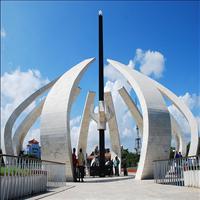 Created by the Tamil Nadu government it is a recently built place, especially for the thriving film industry in Chennai. It has many film studios and a film school. This complex has remarkable outdoor settings. Known to the world over for its film industry, MGR Film City is a special delight in Chennai. In the sprawling Tharamani area, MGR Film city houses various locations and settings for film shootings besides dubbing and re-recording theatres. It is the only one of Chennai's big Tamil film studios that opens its doors to visitors. Several sets of artificial scenery like forests, waterfalls, market places etc., are built here to serve as background for the shooting of films.
Created by the Tamil Nadu government it is a recently built place, especially for the thriving film industry in Chennai. It has many film studios and a film school. This complex has remarkable outdoor settings. Known to the world over for its film industry, MGR Film City is a special delight in Chennai. In the sprawling Tharamani area, MGR Film city houses various locations and settings for film shootings besides dubbing and re-recording theatres. It is the only one of Chennai's big Tamil film studios that opens its doors to visitors. Several sets of artificial scenery like forests, waterfalls, market places etc., are built here to serve as background for the shooting of films.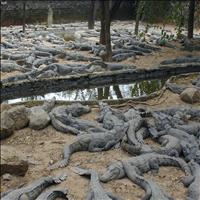 Located 42-m from Chennai is a farm where several species of Indian and African crocodiles and alligators are bred in captivity. This crocodile bank is on the way to Mahabalipuram and is run by Romulve Whittaker.
Located 42-m from Chennai is a farm where several species of Indian and African crocodiles and alligators are bred in captivity. This crocodile bank is on the way to Mahabalipuram and is run by Romulve Whittaker. One of the most famous temples of Chennai, the Parthasarathy Temple in Triplicane or Thiruvallikeni, is dedicated to Lord Krishna. Built by the Pallavas in the 8th century, several additions were made by the Chola and the Vijayanagara Kings. The most important thing about the temple is that it also has images of the five incarnations of Vishnu including that of a wounded Krishna.
One of the most famous temples of Chennai, the Parthasarathy Temple in Triplicane or Thiruvallikeni, is dedicated to Lord Krishna. Built by the Pallavas in the 8th century, several additions were made by the Chola and the Vijayanagara Kings. The most important thing about the temple is that it also has images of the five incarnations of Vishnu including that of a wounded Krishna. Kalakshetra is the internationally renowned institute of classical music and dance. Eminent artists teach here and students from all over the world come here to learn various classical dance and art forms of India.
Kalakshetra is the internationally renowned institute of classical music and dance. Eminent artists teach here and students from all over the world come here to learn various classical dance and art forms of India.Closed On: Sunday
Remarks: During festival and exam period close
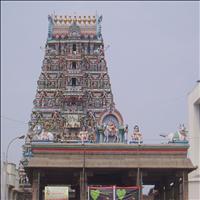 Not far from Triplicane, in Mylapore, there is an 8th century Pallava temple dedicated to Lord Shiva. The temple ‘Gopuram’ (tower) is characteristic of Dravidian style architecture and has some beautiful sculptures. Also in the courtyard under the old Punnai tree is a small shrine depicting Goddess Parvathi in the form of a Peacock Worshipping Lord Shiva. It is from this legend that Mylapore derived its name -'myil' meaning peacock and 'oor' meaning town.
Not far from Triplicane, in Mylapore, there is an 8th century Pallava temple dedicated to Lord Shiva. The temple ‘Gopuram’ (tower) is characteristic of Dravidian style architecture and has some beautiful sculptures. Also in the courtyard under the old Punnai tree is a small shrine depicting Goddess Parvathi in the form of a Peacock Worshipping Lord Shiva. It is from this legend that Mylapore derived its name -'myil' meaning peacock and 'oor' meaning town. 





